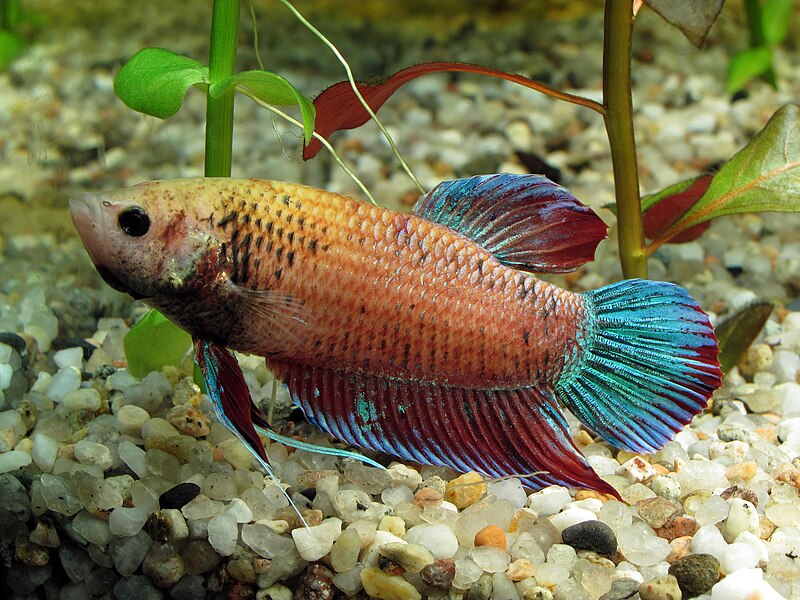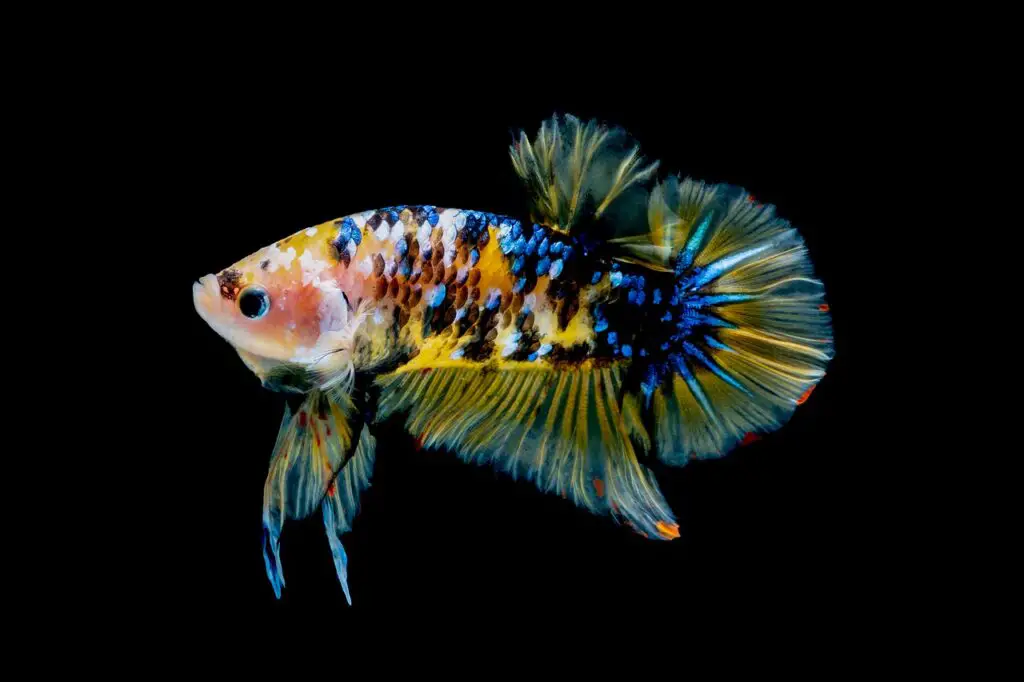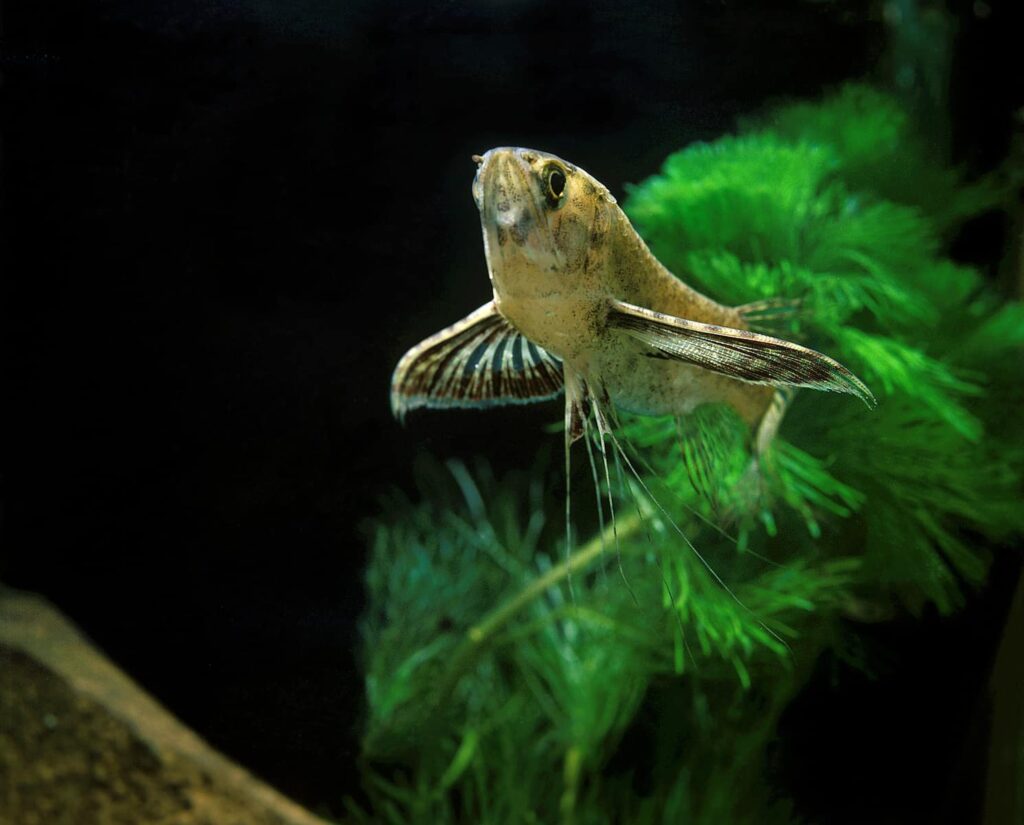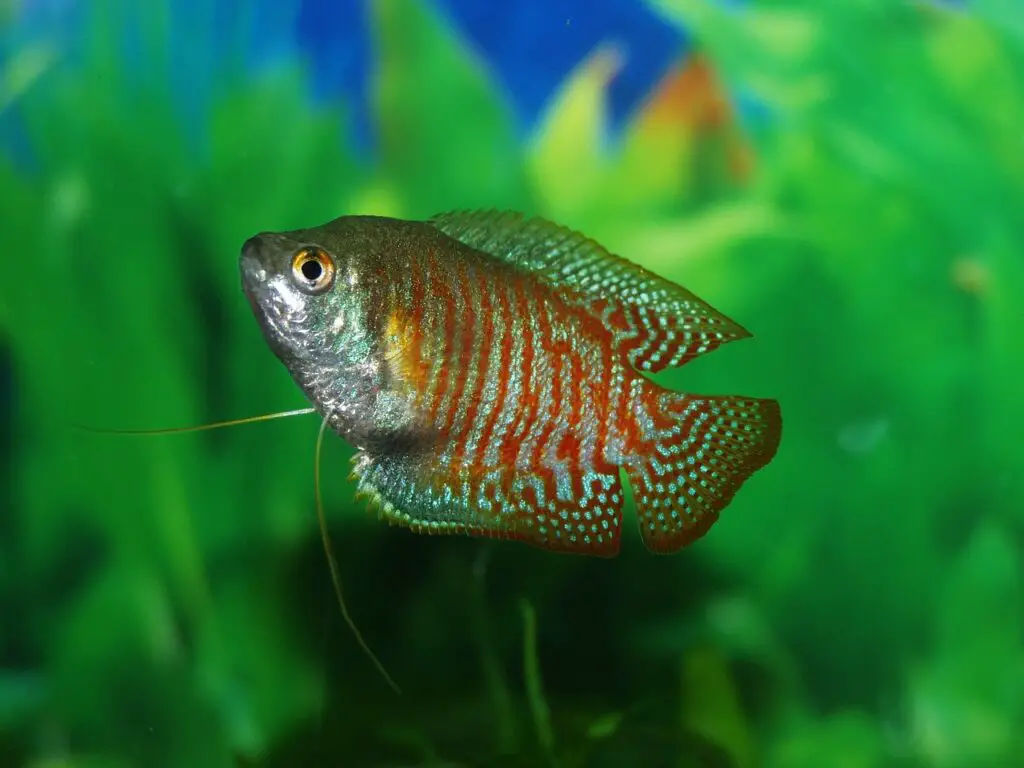Unlocking the Enchantment of Betta Fish Care
Betta fish, renowned for their breathtaking colors and unique vibrancy, stand as one of the most sought-after choices for freshwater aquarium enthusiasts globally. Often referred to as the Siamese fighting fish, these captivating creatures belong to the gourami family, showcasing a distinct charm that sets them apart in the aquatic realm.
In the realms of freshwater aquariums, the Betta fish’s allure lies not only in its aesthetic appeal but also in the fascinating intricacies of its behavior. Aquarium enthusiasts, both seasoned and newcomers, find themselves drawn to the captivating nature of these fish, making them a popular and rewarding addition to home aquariums.
As we embark on this comprehensive guide, we delve into the dual facets of the Betta fish – its visual splendor and the nuances of its behavior. Understanding the intricacies of these aspects becomes paramount for anyone seeking to nurture these aquatic gems successfully.
The Siamese Fighting Fish and the Gourami Connection
The Betta fish, scientifically known as Betta splendens, earns its moniker “Siamese fighting fish” due to its territorial and combative nature, particularly among males. This inherent behavior, coupled with their striking appearance, has contributed to their popularity in the aquarium community.
Belonging to the gourami family, Betta fish share a lineage with other notable aquatic species. This familial connection highlights the significance of recognizing their specific needs and characteristics when it comes to care and maintenance within a controlled environment.

In the subsequent sections of this guide, we embark on a journey through the various facets of Betta fish care, exploring the critical elements that contribute to their well-being. From understanding their behavior and temperament to providing specialized care, nutrition, and creating an enriching environment, this guide aims to equip enthusiasts with the knowledge needed to ensure a thriving Betta fish habitat.
Join us as we unlock the secrets to fostering not just a visually stunning aquarium, but also a habitat where Betta fish can flourish, expressing their natural behaviors in a carefully curated aquatic haven. The journey begins with unraveling the mesmerizing world of Betta fish, where each splash of color tells a story of resilience and beauty.
Illuminating the Intricacies of Betta Fish Behavior
Beyond the vibrant hues that characterize Betta fish, their behavior adds an extra layer of fascination for aquarium enthusiasts. Understanding the intricacies of their conduct is paramount for creating an environment where these captivating creatures can thrive.
The Betta Persona: Colors and Compatibility
Betta fish possess a unique personality that sets them apart in the aquarium realm. Their stunning colors, ranging from deep blues and fiery reds to shimmering yellows, serve as a visual testament to their allure. However, before introducing them to a shared tank, it becomes imperative to unravel the nuances of their temperament.
As Siamese fighting fish, Betta males, in particular, are known for their territorial and sometimes combative nature. Careful consideration must be given when selecting tank mates, as not all fish may be compatible with the Betta’s temperament. Assessing compatibility ensures a harmonious aquatic community, preventing unnecessary stress and potential conflicts.

Creating Harmony in the Tank: Specialized Care Essentials
Specialized care is the cornerstone of ensuring Betta fish thrive in their environment. The water temperature becomes a crucial factor, with the optimal range lying between 75.2°F and 80.5°F. Striking a balance in this temperature spectrum contributes significantly to their overall health and vitality.
Strategic tank placement is another aspect to consider. Minimizing noise and providing exposure to gentle sunlight, while being mindful of potential algae growth, enhances the well-being of Betta fish. The selection of tank decorations and substrate demands attention, ensuring a safe and comfortable habitat free from sharp or pointy elements that could harm these delicate creatures.
Nourishing the Beauty: Balanced Nutrition for Betta Fish
In the enchanting world of Betta fish care, providing a well-rounded and nutritious diet is paramount to ensuring their health, vitality, and the longevity of their stunning colors. Betta fish, originating from waters teeming with insect life and shrimp, have specific dietary requirements that can be met through a thoughtful feeding regimen.
Diverse Diets for Dazzling Colors:
Betta fish are not only admired for their vivid colors but also for their varied diets. Offering a mix of premade and live foods mirrors their natural habitat and provides essential nutrients. Bloodworms, a favorite among Betta fish, contribute to their vibrant colors and overall well-being. While premade foods offer convenience, incorporating live foods introduces an element of stimulation, mimicking their natural hunting instincts.

Quality Nutrition over Quantity:
While cost-effective food options may be tempting, prioritizing quality nutrition is vital for Betta health. Opt for a well-balanced food mix that offers a spectrum of nutrients. Feeding should be a carefully monitored activity, with the goal of ensuring that Betta fish consume their meal within five minutes. Leftover food can disrupt water balance, underscoring the importance of moderation.
Observing and Adjusting:
Betta fish, like many sensitive freshwater species, exhibit signs through their behavior and appearance. Regular observation is crucial, as changes may indicate dietary issues or potential health concerns. If a Betta shows signs of illness or low energy, adjusting their diet and consulting with a vet ensures prompt and appropriate care.
The Art of Feeding:
As Betta fish mature, their feeding routine evolves. Adults can be fed twice a day, providing a consistent and nutritious diet. However, vigilance is key to preventing overfeeding, as Betta fish may consume more than they can physically accommodate, leading to potential health issues.
Navigating the nutritional landscape for Betta fish requires a delicate balance between variety, quality, and moderation. In this section, we unravel the secrets of feeding Betta fish, unlocking the gateway to vibrant colors, robust health, and the sheer joy of witnessing these aquatic marvels thrive in their carefully curated environment.
Tank Size Matters: Providing Adequate Space for Betta Bliss
In the realm of Betta fish care, the size of the aquarium plays a pivotal role in their well-being. While these captivating creatures may be small in stature, the significance of an appropriately sized tank cannot be overstated. This section explores the critical importance of tank size and its impact on the happiness and health of Betta fish.
Minimum Requirements for Betta Abodes:
At a bare minimum, a Betta fish should be housed in a tank that is no smaller than five gallons. This size allows for proper filtration, water stability, and sufficient swimming space. While Betta fish are known for their adaptability, a larger tank offers a more comfortable and stress-free environment.
The Psychology of Space:
Betta fish, like all aquatic creatures, benefit from ample space. A larger tank provides a more naturalistic environment, reducing stress and promoting a sense of freedom. This is particularly important for Betta fish, which may exhibit signs of distress in confined spaces.
Swimming Room and Hiding Spots:
Apart from sheer size, the layout of the tank is crucial. Betta fish, while often vibrant and engaging, may require hiding spots to retreat to when they feel the need for security. The inclusion of appropriate hiding places and ornaments contributes to a well-balanced tank setup.
Introducing Tank Mates:
For those considering introducing other fish into the Betta habitat, upgrading the tank size is imperative. Betta fish may be territorial and aggressive, especially towards their own kind. A larger tank provides sufficient room for multiple species, reducing the likelihood of conflicts.
Community Insights:
To determine the ideal tank size, turning to online resources, guides, and product reviews becomes invaluable. Fellow Betta fish enthusiasts often share their experiences, offering insights into tank sizes that have proven successful in creating thriving aquatic communities.
Essential Tank Equipment – Ensuring Optimal Conditions for Betta Bliss
Creating a conducive environment for Betta fish involves more than just water and space. This section explores the crucial equipment needed to maintain optimal conditions within the tank, ensuring the health and well-being of these captivating aquatic companions.
Maintaining the Right Water Conditions:
Water temperature is a key factor in Betta fish care. Including a reliable heater in the tank is essential to regulate the temperature, keeping it within the optimal range of 75.2°F to 80.5°F. This not only mimics their natural habitat but also prevents temperature fluctuations that can stress or harm the fish.
The Role of a Trusty Filter:
A quality filter is indispensable in maintaining water balance and cleanliness in the tank. Left unchecked, stagnant water can lead to bacterial growth and increased nitrate levels, posing risks to the health of Betta fish. A proper filter efficiently removes impurities, ensuring a healthy and thriving aquatic environment.
Bubblers as Backup:
While not a necessity, a bubbler or air pump can serve as a valuable backup, especially in the event of a power outage. Ensuring continuous oxygen supply is vital for Betta fish, and a bubbler can prove beneficial during emergencies. Additionally, some Betta fish may enjoy interacting with the bubbles, adding a playful element to their environment.
Filtration and Water Changes:
A reliable filter system not only maintains water quality but also reduces the frequency of water changes. Regular water changes, typically around 30% per week, help keep the tank environment pristine. Combining a good filter with consistent water changes contributes to the overall health and longevity of Betta fish.
Expert Consultation:
For those new to Betta fish care, seeking guidance from aquarium specialists or vets can provide valuable insights. These experts can recommend specific equipment based on the unique needs of Betta fish, ensuring a tailored approach to maintaining a healthy aquatic habitat.
Enriching Your Betta’s Environment – From Toys to Playtime
Betta fish, with their playful demeanor and vibrant personalities, thrive in environments that stimulate their natural behaviors. This section explores the various elements that can enrich the lives of Betta fish, turning their aquarium into a dynamic and engaging space.

Playful Elements for Betta Delight:
Betta fish exhibit a playful nature, and providing them with toys and interactive elements enhances their well-being. Safe decorations, such as floating logs or artificial plants, introduce variety and intrigue into the tank. These elements not only serve as enrichment but also offer hiding spots for Betta fish to explore and interact with.
Fish-Friendly Ping Pong Balls:
A simple yet effective addition to the Betta tank is a fish-friendly ping pong ball. Cleaned and introduced into the water, these balls can capture the attention of Betta fish, encouraging them to play and interact. However, it’s crucial to supervise this activity and remove the ball after a certain period to prevent any potential hazards.
Mirrors for Mental Stimulation:
Mirrors can be fascinating additions to a Betta tank, providing mental stimulation. Bettas are known for their flaring and preening behaviors, and a mirror can elicit these responses, boosting their self-esteem. However, mirrors should be used intermittently, as prolonged exposure may lead to increased stress or altered behaviors.
Balancing Playtime and Safety:
While introducing playful elements, it’s essential to strike a balance between entertainment and safety. Any toys or decorations should be carefully chosen to prevent harm or stress to Betta fish. Regular observation ensures that the enriching elements contribute positively to their overall well-being.
Understanding Playful Behaviors:
Betta fish can exhibit a range of playful behaviors, from chasing floating objects to exploring nooks and crannies. Observing and understanding these behaviors provides valuable insights into their preferences, allowing aquarium enthusiasts to tailor the environment to suit the unique personalities of their Betta companions.
Addressing Betta Loneliness – The Art of Solitude for Siamese Fighters
Contrary to popular belief, Betta fish are not prone to loneliness and, in fact, flourish when given the space and stimulation to express their individuality. This section dispels myths surrounding Betta loneliness and provides insights into creating a harmonious environment that complements their natural behaviors.

Territorial Nature of Betta Fish:
Betta fish, often referred to as Siamese fighting fish, derive their name from their territorial and sometimes aggressive behavior, particularly among males. In their natural habitat, Betta fish inhabit small, isolated areas, making them well-adapted to a solitary lifestyle.
Avoiding Aggression:
Housing multiple Betta fish together, especially males, can lead to aggression and territorial conflicts. It’s advisable to keep Betta fish individually to prevent stress and potential harm. Contrary to other social fish, Betta fish thrive when provided with sufficient space and minimal interaction with their own kind.
Providing Stimulation and Hiding Spots:
Loneliness is not a concern for Betta fish when their environment is enriched with appropriate stimuli. A well-decorated tank with hiding spots, plants, and toys caters to their need for exploration and interaction. A solitary Betta fish, given the right conditions, will display contentment through vibrant colors and playful behaviors.
The Myth of Betta Companionship:
While some fish species thrive in groups, Betta fish are not social in the same way. Attempting to house multiple Betta fish together can result in stress, injuries, and even fatalities. Understanding and respecting their solitary nature is key to providing an environment where Betta fish can lead healthy and fulfilling lives.
Enriching the Solo Experience:
Ensuring a Betta fish has a spacious tank, engaging decorations, and a varied diet contributes to their overall well-being. Regular observation allows caretakers to monitor for signs of contentment, ensuring that the Betta is thriving in its individual habitat.
Understanding Betta Size – Small Wonders in Aquatic Realms
Betta fish, though small in size, possess a magnificence that extends beyond their physical dimensions. This section delves into the unique characteristics of Betta size, exploring their petite stature, vibrant fins, and the profound impact that an appropriately sized tank can have on their overall well-being.
The Petite Elegance of Betta Size:
Betta fish, typically growing to about three inches in length, are renowned for their compact yet striking appearance. The true allure lies not only in their body size but in the majestic display of their flowing fins, which can make them appear larger than their actual dimensions.
Size and Tank Considerations:
While Betta fish may be small, the importance of an adequately sized tank cannot be overstated. A minimum tank size of five gallons provides ample space for swimming, exploration, and the expression of natural behaviors. Larger tanks, exceeding this minimum, contribute to a less stressful environment and a visually appealing aquatic landscape.
Fins, Colors, and Aesthetic Appeal:
The ornate fins of Betta fish contribute significantly to their visual impact. A larger tank allows these graceful creatures to showcase their finnage, creating a spectacle of vibrant colors and flowing patterns. Investing in a generously sized tank not only benefits the Betta’s mental well-being but enhances the aesthetic beauty of the aquarium.
Mental Health and Stress Prevention:
While Betta fish are known for their resilience, they can still be prone to stress. Providing an appropriately sized tank with ample space, hiding spots, and engaging decorations reduces stress levels and promotes mental health. Regular observation aids in identifying any signs of discomfort or adjustment issues.
Lovingly Tailoring Tank Size:
Every Betta fish is unique, and their preferences may vary. Turning to online resources, community forums, and product reviews offers valuable insights into the experiences of fellow Betta enthusiasts. Tailoring the tank size to accommodate the specific needs of the individual Betta ensures a customized and thriving aquatic habitat.
Conclusion: Nurturing the Splendor of Betta Fish Care
In the intricate tapestry of Betta fish care, where vibrant colors meet captivating behaviors, the journey unfolds as a delicate dance between the art and science of aquarium keeping. As we conclude this comprehensive guide, a harmonious aquarium habitat emerges as the canvas upon which Betta fish can express their unique personalities and thrive in all their splendor.
A Symphony of Colors and Behaviors:
Betta fish, known for their resplendent hues and enchanting fins, paint a living masterpiece within the confines of a well-maintained tank. Understanding the intricacies of their behaviors, from territorial tendencies to playful moments, allows caretakers to become maestros orchestrating a symphony of aquatic beauty.
Tailoring Environments for Individual Bliss:
From the temperature-regulated waters to the thoughtfully chosen decorations, each element in the Betta tank contributes to the overall well-being of these small wonders. The importance of providing a space that suits the individual preferences of each Betta fish is paramount, as witnessed through their vibrant displays and contented behaviors.
Dispelling Myths and Embracing Solitude:
Contrary to misconceptions, Betta fish thrive in individual habitats where their territorial nature is respected. Dispelling myths about loneliness, we celebrate the independence of these creatures, each flourishing in a personalized aquatic realm enriched with engaging elements that stimulate their curiosity and playfulness.
The Balance of Size and Space:
Acknowledging the petite elegance of Betta size, we recognize that their stature belies the grandeur they bring to aquariums. A carefully chosen tank size becomes a stage where Betta fish unfold their fins and reveal the true extent of their beauty. Beyond aesthetics, an appropriately sized tank contributes to mental well-being and stress prevention.
A Call to Responsible Care:
As aspiring Betta enthusiasts embark on the journey of caring for these aquatic marvels, a call to responsible care echoes through each guideline. From tailored nutrition to a vigilant eye on water conditions, the commitment to providing an optimal environment resonates as a promise to safeguard the health and happiness of Betta fish.



